40 Years of Volkswagen Golf Cabriolet
The 1960s and 70s were marked by a new safety thinking after several fatal accidents with open convertibles. While manufacturers such as Chevrolet and Porsche swung from fully open cars to Targa models with removable roof panels above the passengers, other brands considered the complete discontinuation of these model variants. Among them was for short time also Volkswagen. At that time they had a real popular car in their portfolio with the Beetle Cabriolet, but since the new Golf debuted in 1974 it was obvious that its production time would end soon. Since there were no official efforts from VW to develop a successor, another team tried to do so.
Karmann in Osnabrück/Germany has been manufacturing the Beetle Cabriolet since 1949 and now developed an open version of the Golf, which was presented in 1976 to the responsible persons of the Volkswagen board in Wolfsburg. This prototype received a new design for the smaller rear side windows and a soft top hidden under a special tarp. The back seats offered slightly less legroom compared to the normal two-door Golf and came without headrests. However, the new sideline with small ascending kink and the complete open roof didn’t meet the expectations of the Volkswagen Design team. Prof. Dr. Ulrich Seiffert, then Head of Vehicle Safety at Volkswagen, decreed: “Not without a rollbar!” The team at Karmann immediately developed a welded rollbar at the B-pillars, which not only improved the rollover protection and was used as a pivot point for the front safety belts, but also served as an additional support for the fabric top. In addition, it was the reason for two German nicknames of the car: ‘Erdbeerkörbchen’ (strawberry punnet) and ‘Henkelmann’ (mess kit).












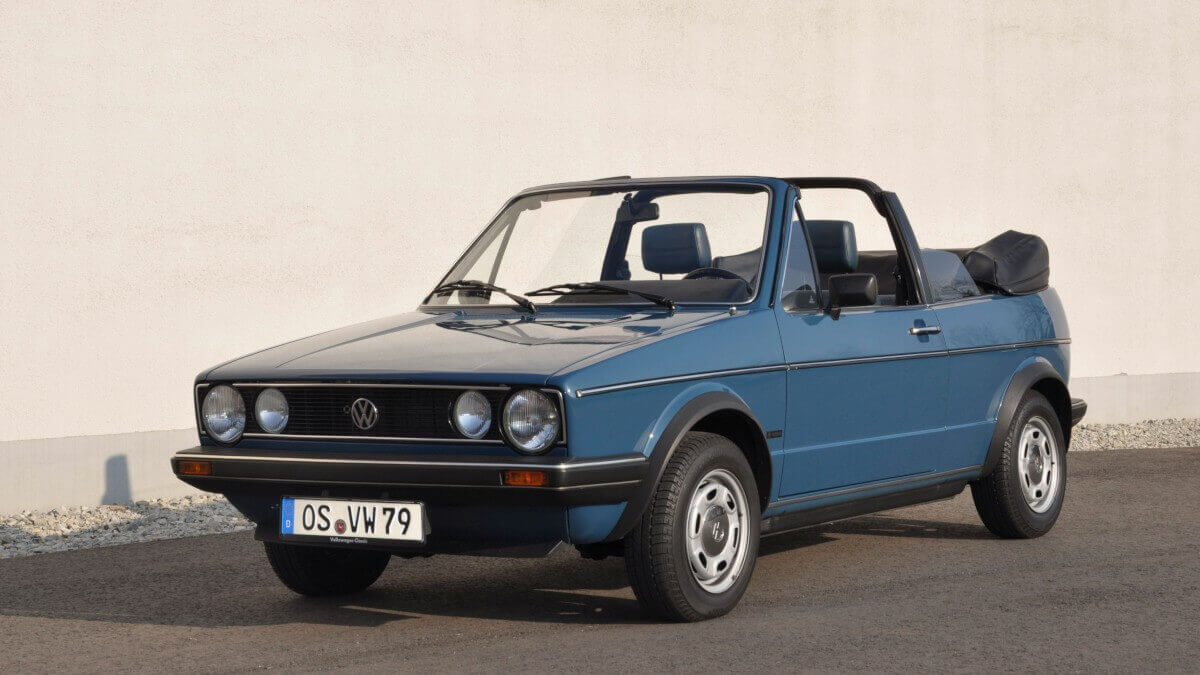







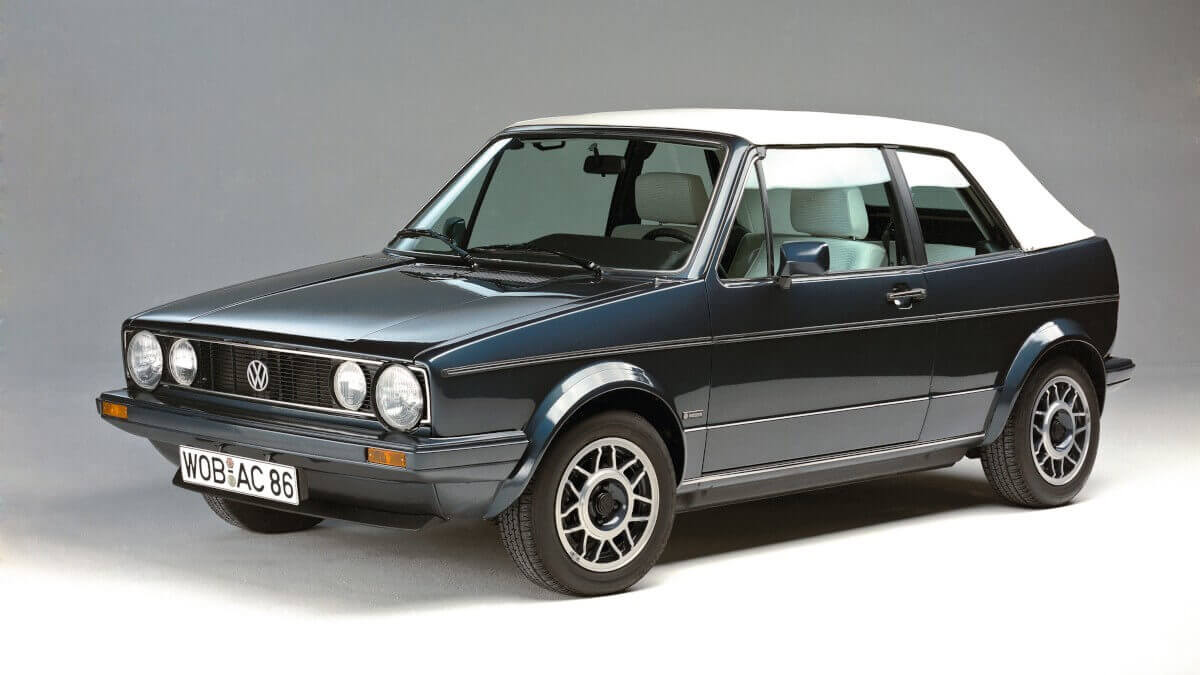











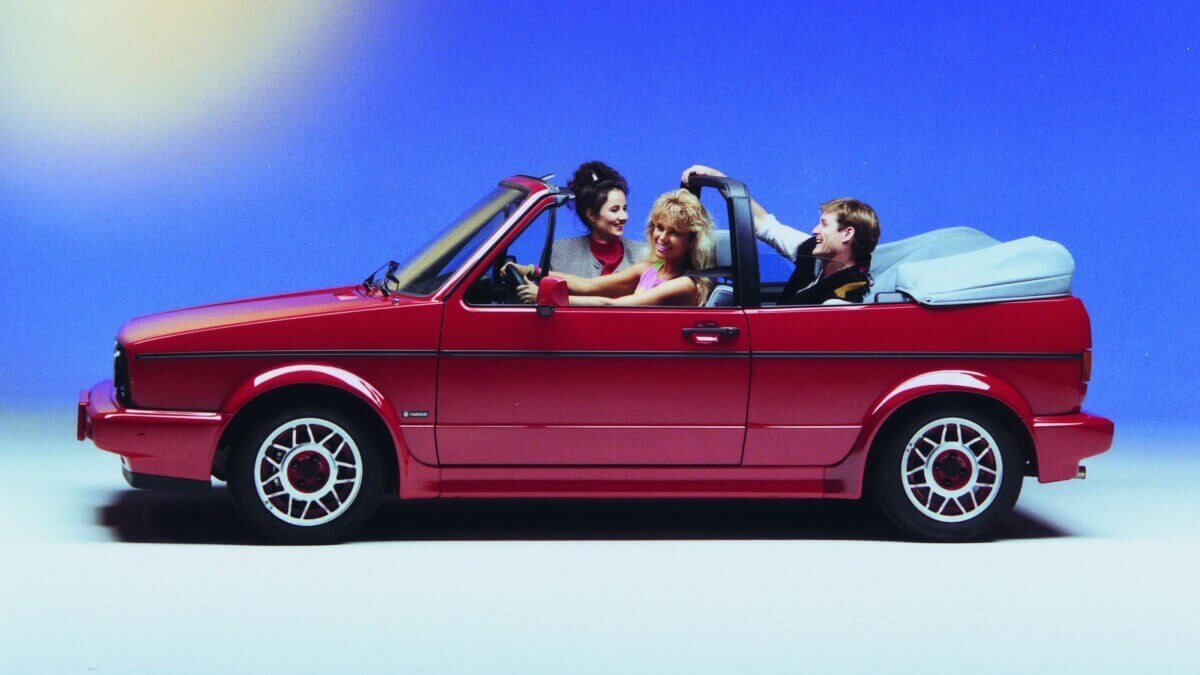











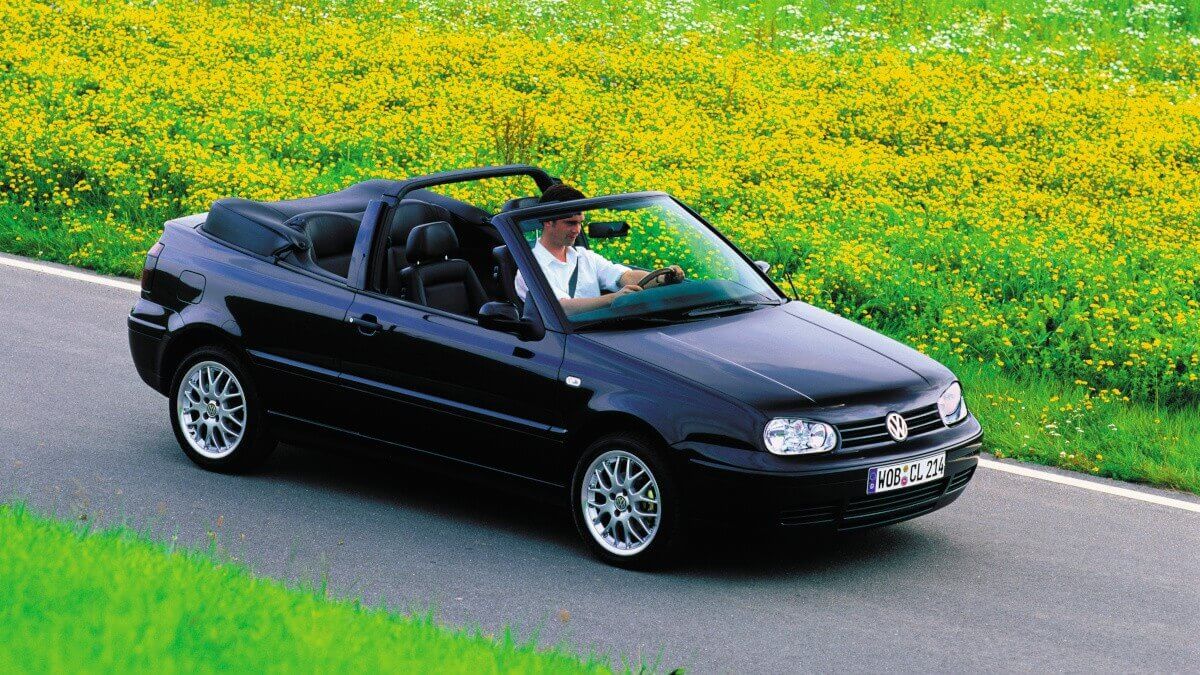



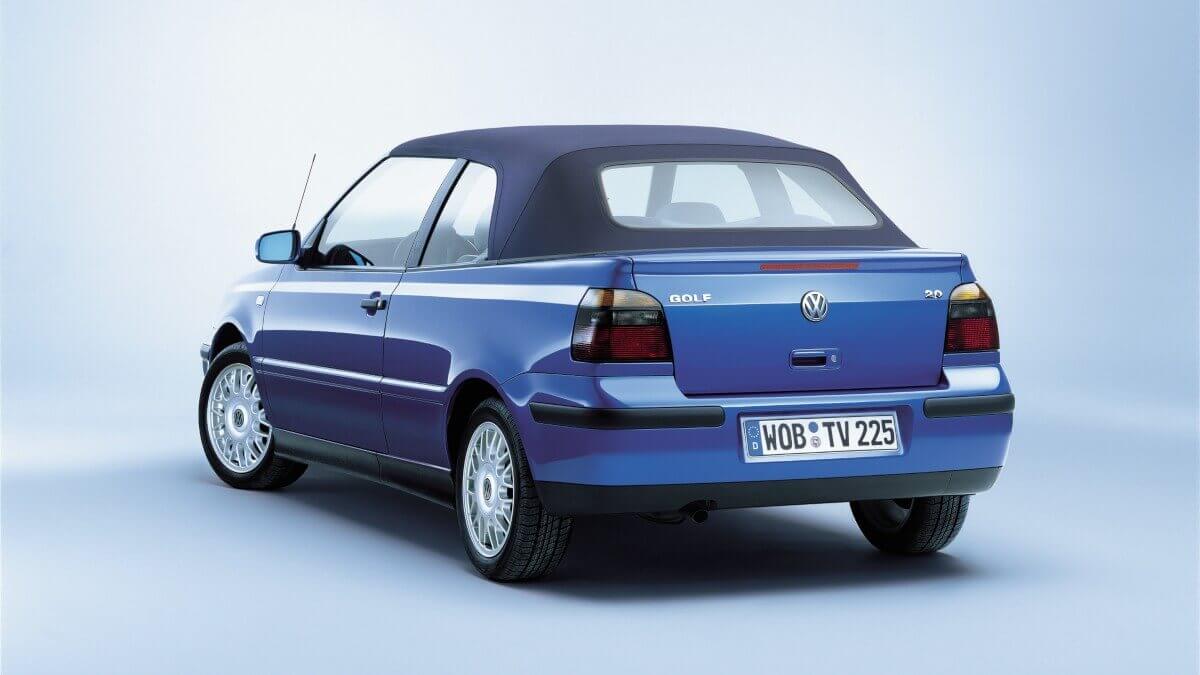







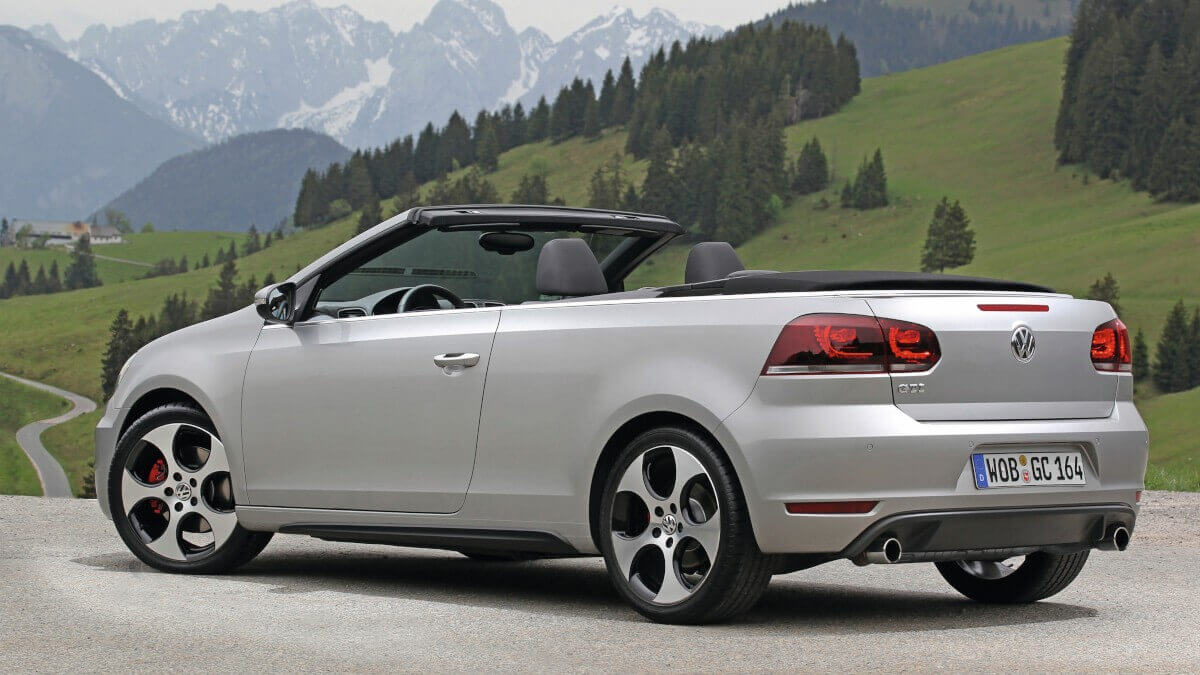



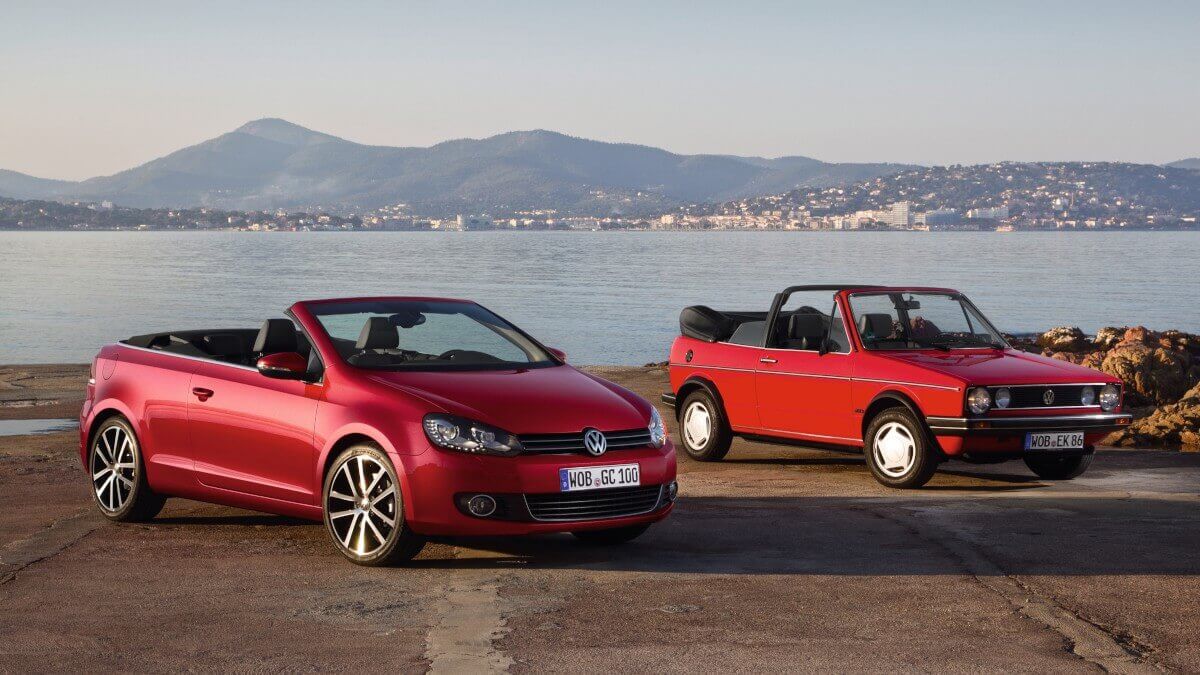



With the slogan ‘Sun, Moon and Cabriolet’ Volkswagen introduced the Golf Cabriolet on the market at February 14, 1979. Whether the Valentine’s Day is in charge for the high popularity of the open four-seater until today, can’t be clarified conclusively. From a model-political point of view, the open offshoot actually came much too late, because in 1983 the change from Golf I to Golf II took place at the closed models. However, the Golf Cabriolet was spared and its production continued until 1993, almost unchanged at the exterior. Some upgrades in the interior caused constant refreshments. In total, around 389,000 copies were made in Osnabrück.
In mid-July 1993, they changed from Golf I Cabriolet to Golf III Cabriolet, which retained the characteristic safety bar. By 1997, 139,578 vehicles ran off the line, which thanks to higher-quality safety equipment with airbags, ABS and side impact protection as well as a lower lying soft top also have cult status today. Through an extensive facelift, Volkswagen and Karmann redeveloped the car visually into the Golf IV with the front design and interior, while at the rear only the licenseplate changed its place from bootlid to bumper. In 2001, Volkswagen stopped the production of the Golf Cabriolet for the next ten years. Only in 2011 a new Cabrio based on the Golf VI appeared on the market, now without visible rollbar. Next to the typical engines, VW also offered Turbodiesel engines, a GTI and an R version, before in 2016 the production ended after 770,039 copies. Until today the chapter of Golf Cabriolets hasn’t been opened again.
At the Bremen Classic Motorshow, Volkswagen will be showing both the Karmann prototype of 1976 and a very early production car for three days beginning today. This classic car show is worth a visit. We will report shortly.
Images: Volkswagen




